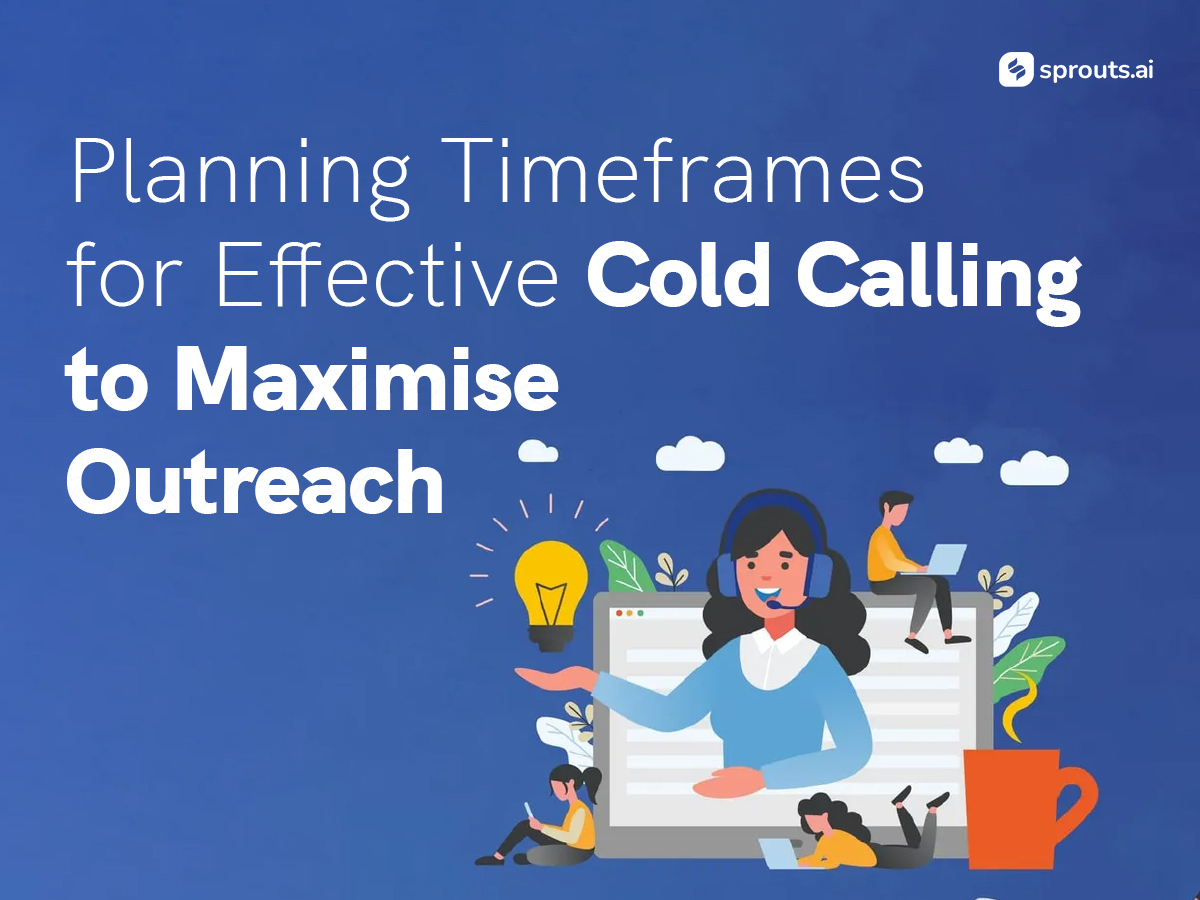Cold calling remains a tried-and-true method for reaching potential clients in sales and business development. However, success in cold calling is not just about having a compelling pitch – timing also plays a crucial role. The strategic selection of the right moment can significantly impact your chances of turning a cold call into a warm lead. In this blog, we will discuss the science behind effective cold-calling timing, explore the best time for cold-calling, and how to make the most out of it.
Why Timing Matters
Imagine calling someone during their evening family time or when they are knee-deep at work. Chances are, your call will be met with frustration or dismissed altogether. The key to successful cold calling is respecting your potential client’s time and habits. Here’s why timing matters:
Attention and Receptivity: People are most receptive when not preoccupied with other tasks. Calling during a time when your prospect can give you their full attention increases the likelihood of engagement and interest.
Psychological Readiness: Research has shown that people are more open to new ideas and conversations at certain times of the day. You can initiate a more productive conversation by tapping into these psychological readiness periods.
Less Competition: Choosing the right time to call means you’re more likely to catch your prospect when they’re not bombarded by other calls or tasks, increasing your chances of being heard.
The Ideal Timeframes for Cold Calling
Mid-Morning Magic: Mornings are often the best time for cold calling. Between 10 AM and 11:30 AM, most people have settled into their workday but have yet to reach the midday slump. Their fresh minds make them more attentive and responsive to your call.
Lunch Hour Connection: Contrary to common belief, the lunch hour, mainly between 1 PM and 2 PM, can be a great time to call. Many people are more relaxed during this period, making them more open to conversations.
Post-Lunch Engagement: The period from 3 PM to 4:30 PM is often a sweet spot for cold calling. It’s after lunch but only a little far from the end of the workday. People might be looking for a distraction or a way to wind down their day, offering you a chance to engage them effectively.
Thursday’s Triumph: While the best day for cold calling can vary depending on your target audience, Thursday tends to stand out as a favorable option. By this time, the chaos of the beginning of the week has settled, and people are more willing to have conversations.
Understanding Your Audience
Remember, the ‘best’ time for cold calling can vary based on your industry, target audience, and geographical location. Here’s how to fine-tune your approach:
Time Zones: If your calls span different time zones, remember when you’re reaching out. You wouldn’t want to wake someone up with a call at an inconvenient hour.
Industry Analysis: Different industries have different peak hours. Research your target industry to understand when professionals are most likely available and receptive.
Prospect Roles: Consider the roles of the individuals you’re calling. Executives might prefer early mornings or late afternoons, while mid-level employees might be more accessible during regular business hours.
Adapting to Remote Work Culture
The rise of remote work has changed the dynamics of cold calling. Professionals are no longer confined to traditional office hours; flexibility is key. Here’s how to navigate this shift:
Flexibility Wins: Since many work from home, the lines between personal and professional time can blur. Be prepared to make calls during the early evening or even on weekends, when prospects might be more available.
Virtual Tools: Leverage technology to schedule calls at mutually convenient times. Calendar apps and scheduling tools can help you find optimal time slots.
Creating Lasting Impressions
Cold calling isn’t just about the timing; it’s also about the quality of your conversation. Here’s how to make the most of your calls:
Engaging Opener: Start with a hook that grabs your prospect’s attention. A thought-provoking question or a relevant industry statistic can set the tone for a meaningful conversation.
Personalization: Tailor your pitch to the individual you’re calling. Mention recent news about their company or industry to show that you’ve done your homework.
Value Proposition: Communicate the value you can bring. How can your product or service solve a pain point they might face?
Active Listening: Pay attention to their responses and adapt your pitch accordingly. Listening shows that you’re invested in their needs and not just following a script.
In cold calling, timing is indeed everything. Understanding the science behind the best time for cold calling and adapting to the evolving work landscape can significantly enhance your chances of success. Remember that your prospects are not just numbers on a list but individuals with their schedules and preferences. Respect their time by choosing the best time for cold calling, offer value, and you’ll find that your efforts yield more meaningful connections and potential business opportunities.

